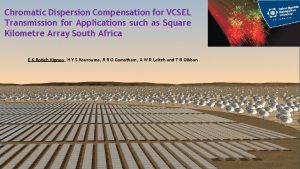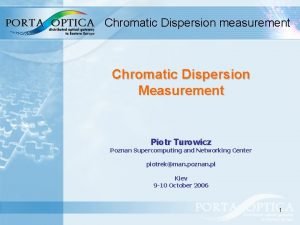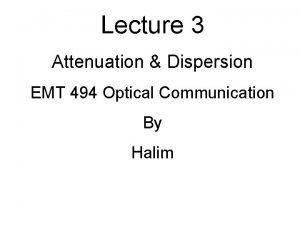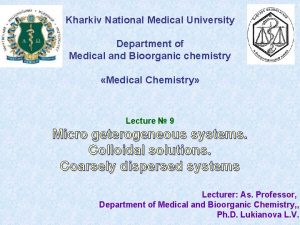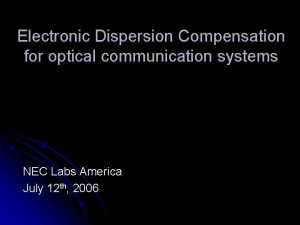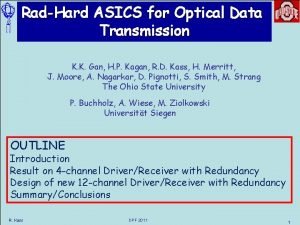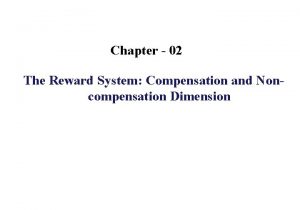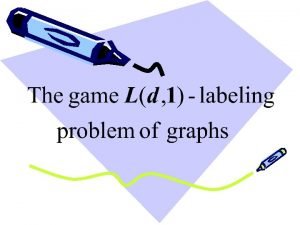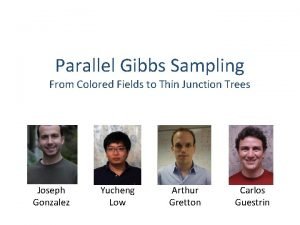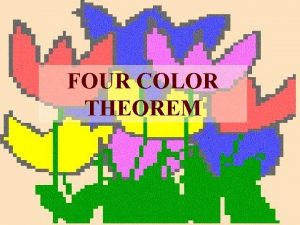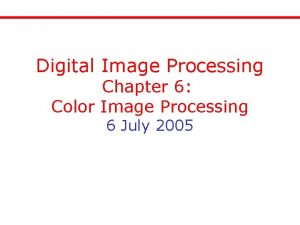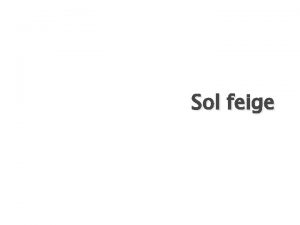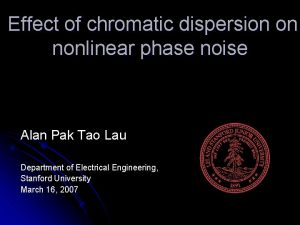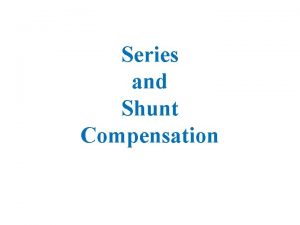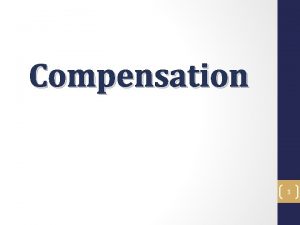Chromatic Dispersion Compensation for VCSEL Transmission for Applications
















- Slides: 16

Chromatic Dispersion Compensation for VCSEL Transmission for Applications such as Square Kilometre Array South Africa E K Rotich Kipnoo, H Y S Kourouma, R R G Gamatham, A W R Leitch and T B Gibbon

Outline v Introduction v Dispersion in an optical fibre Ø Types of dispersion Ø Compensation techniques v Inverse dispersion fibre v Methodology v Results & Discussion v Conclusion v Acknowledgement

Introduction SKA, South Africa (2024) - large radio telescope, about 100 times more sensitive than the biggest existing radio telescope in the world. -Approx. 3, 000 antennas, half concentrated in a central region (Karoo), and the rest distributed out to 3, 000 km. -The sparse aperture array (low frequency array) will be built in Western Australia Meer KAT telescope – as a pathfinder to the SKA-Phase 1; 2016 KAT-7 The first seven dishes- complete 2009 -2012: SKA preparatory phase 2013 -2015: SKA Pre-construction Phase 2016 -2018: Construction, verification, commissioning, Acceptance, integration and first science. Square kilometre array (SKA) website: http: //www. ska. ac. za/index. php

Dispersion • • Dispersion - time domain spreading / broadening of pulses Types of dispersion q Chromatic dispersion (CD) q Polarization modes dispersion (PMD) Chromatic Dispersion ü Deterministic ü Linear ü Independent of environmental factors ü Can be compensated • How does a pulse spread? v Light sources emit a band of spectral width, ∆λ v Speed of travel depends on the wavelength and fibre design • ∆λ Wavelength

Chromatic Dispersion • In a positive dispersion fibre: short wavelength arrive before long ones • Total CD = Material contribution + waveguide contribution • ü Material – depend on material and cant be changed ü Waveguide - depend on refractive index profile-can be engineered Broad Spectrum 1 Difference in group velocity 1 1 1 Broadened pulse 1 0 Input at transmitter • Optical fibre Output at receiver Limits bandwidth and transmission distance esp. as the bit rates increase

Dispersion compensating techniques • Electronic chirp implementation on laser diode and modulator chirp (pulse shapingreduce width) • In-line compensation q Dispersion compensating fibre (DCF)/reverse dispersion fibre (RDF) /Inverse dispersion fibre (IDF) q fibre Bragg grating (FBG) q phase conjugation • Post compensation scheme involving electronic equalization at the receiver. • Soliton transmission Inverse dispersion fibre v high negative dispersion v negative dispersion slope Gumaste A and Antony T 2002 DWDM Network Designs and Engineering Solutions (Indianapolis : Cisco Press) He G S 2002 Optical phase conjugation: principles, techniques, and applications Prog. in Quant. Elect. 26 pp 131– 191 Aikawa K, Yoshida J, Saitoh S, Kudoh M and Suzuki K 2011 Dispersion Compensating Fibre Module Fujikura Tech. rev. pp 16 -22

IDF compensation Compensating fibre - IDF Transmitting fibre - SSMF + Positive dispersion Negative dispersion Longer wavelength - slow Longer wavelength - fast Shorter wavelength - slow Negative dispersion Longer wavelength - fast Positive dispersion Longer wavelength - slow Shorter wavelength - fast Hecht J 1999 Understanding fibre optics 3 rd Ed. (Upper Saddle River New Jersey: Prentice-Hall)

Research design . Experimental set up used. PPG - pattern generator, LDC - laser diode control, BT - bias tee, SMF - single mode fibre, IDF - dispersion compensation fibre, VOA - variable optical attenuator, PD - photo detector, EA - electrical amplifier and BERT - bit error rate tester. 1550 nm transmission Inverse dispersion fibre http: //www. thorlabs. com/images

Results and discussion (a)Unmodulated VCSEL q low power q wavelength tuneability-suitable for wavelength division multiplexing (WDM) (b)BER for different transmission lengths Ø Receiver sensitivity at about -25 d. Bm Ø Error floor above 35 km transmission

CD compensation (a) Simulation using IDF Ø Fibre length, L=10. 4 km Ø Dispersion, D= -54 ps/nm. km Ø Dispersion slopes 0. 18 ps/nm 2. km SSMF o L =35 km, o D=17 ps/nm. km o S=0. 08 ps/nm 2. km • 3. 72 d. B achieved • 0. 4 d. B residual dispersion (b) IDF compensation ü Compensated power increase with fibre length-cumulative effect ü Inset: IDF vs SMF ; derived from equation (1)

G 652 (SSMF) + SRS G. 655 (NZ-DSF-) SSMF SRS NZDSFo L =11 km q L =25. 4 km o D=17 q D=-2. 8 ps/nm. km o S=0. 08 q S<0. 045 ps/nm 2. km SSMF ü Dispersion penalty 0. 4 d. B SRS NZDSF- Signal noise ratio (SNR) q SRS cancels some dispersion in SSMF – improved SNR q Open eye signify signal clarity. q With compensation, 11. 5 km SSMF+25. 4 km SRS comparable to 11. 5 km

Conclusion Too much dispersion in a system leads to power penalty and poor quality of service Inverse dispersion fibre (IDF) compensation is one of the most important items to be considered for design of high bit rate long transmission links/networks. Dispersion Management or optimization may be required for SKA future networks, i. e. , phase 1 and phase 2. With effective compensation on VCSEL technology - the reach on access networks is improved

Acknowledgement OFS Denmark

THANK YOU!

info Why Optical fibre? Ø Speed, bandwidth, immunity to electromagnetic interference, lower loss, low maintainance. Ø Group velocity dispersion (GVD) Time delay Dispersion slope vg is the group velocity and β is the propagation constant, φ is the optical phase and ω is the optical frequency. Band Description Wavelength range O band original 1260– 1360 nm E band extended 1360– 1460 nm S band short wavelengths 1460– 1530 n C band conventional (“erbium window”) 1530– 1565 nm L band long wavelengths 1565– 1625 nm U band ultralong wavelengths 1625– 1675 nm

RDF has several advantages compared with DCF, q lower loss, q lower nonlinearity, q lower PMD soliton is a self-reinforcing solitary wave (a wave packet or pulse) that maintains its shape while it travels at constant speed properties to solitons: They are of permanent form; They are localised within a region; They can interact with other solitons, and emerge from the collision unchanged, except for a phase shift. K. Yonenaga, A. Matsuura, S. Kuwahara, M. Yoneyama, Y. Miyamoto, K. Hagimoto, and K. Noguchi, “Dispersion-compensation-free 40 -Gbit/s 4 -channel WDM transmission experiment using zero-dispersion-flatted transmission line, ” in OFC’ 98, 1998. T. Yamamoto, E. Yoshida, K. R. Tamura, K. Yonenaga, and M. Nakazawa, “ 640 -Gbit/s optical TDM transmission over 92 km through a dispersion-managed fiber consisting of single-mode fiber and reverse dispersion fiber, ” IEEE Photon. Technol. Lett. , vol. 3, pp. 353– 355, 2000 Agrawal G P 2001 Nonlinear Fibre Optics 3 rd Ed. (San Diego: Academic)
 Chromatic dispersion management
Chromatic dispersion management Chromatic dispersion analyzer
Chromatic dispersion analyzer What is intramodal dispersion
What is intramodal dispersion Dispersed phase and dispersion medium
Dispersed phase and dispersion medium Types of colloids
Types of colloids Electronic dispersion compensation
Electronic dispersion compensation Vcsel fabrication process
Vcsel fabrication process Vcsel driver
Vcsel driver Truelight vcsel
Truelight vcsel Noncompensation
Noncompensation Bob chromatic scale
Bob chromatic scale Chromatic light
Chromatic light Chromatic sampler
Chromatic sampler Chromatic number of a graph example
Chromatic number of a graph example Chromatic number
Chromatic number What will be the chromatic number of the following graph? *
What will be the chromatic number of the following graph? * Color level
Color level
